There is nothing quite like a coral reef surrounding the beautiful shore line of some exotic island. And while here, you don’t usually ask what is coral food or how coral works – you just enjoy the beauty.
The Great Barrier Reef is one of the Natural Wonders of the World for a reason. The little fish that swim around among the glorious corals are vibrant and entrancing.
The reef sharks that dive in and out of the reef formations thrill adventure seekers like nothing else.
But a coral reef is, well, a bit big to have at home. Those photos of the memories on your snorkeling trip are awesome, but they’re just not enough. So you might want to keep some coral at home to keep those memories vibrant and bright.
But that means you’ve got to learn a few things about corals – like what they eat, what the different types of coral are, and how to feed them properly.
So, let’s take a look at the feed and care of your SPS and LPS coral and the best things to feed them.
Best Coral Food Quick-find Table
| Image | Product | |||
|---|---|---|---|---|
|
EDITOR’S CHOICE
|
EDITOR’S CHOICE
|
|
|
VIEW LATEST PRICE |
|
BEST CORAL FOOD FOR BEGINNERS
|
BEST CORAL FOOD FOR BEGINNERS
|
|
|
VIEW LATEST PRICE |
|
BEST CORAL FOOD REEF TANKS NEED FOR THE WHOLE BOTTOM LAYER
|
BEST CORAL FOOD REEF TANKS NEED FOR THE WHOLE BOTTOM LAYER
|
|
|
VIEW LATEST PRICE |
|
BEST BIOGENIC MATTER
|
BEST BIOGENIC MATTER
|
|
|
VIEW LATEST PRICE |
What’s the Difference Between LPS and SPS Coral?
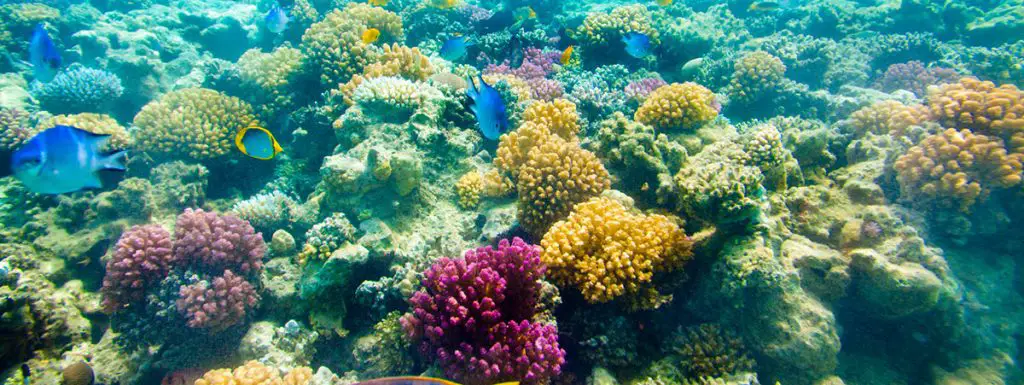
Okay, so looking at corals, you make easily think there’s not much to them. Some come in pinks shades while others come in more vivid shades that almost glow in the dark. Is that the only difference?
Absolutely not.
Just like animals on the dry land can closely resemble each other but be completely different critters, corals have varying natures as well.
Author note: Corals are not plants but living marine organisms found in colonies of individual polyps. They grow, reproduce, build skeletons, and build coral reefs.
But the two major types of coral that you can keep at home in your aquarium are rather different in size, shape, softness levels, and much more.
LPS corals are the ones that have the large, fleshy polyps with a hard skeleton underneath.
The SPS coral has small polyps that have a hard stony skeleton base. Flowery looking dots cover this kind of coral.
Both LPS and SPS corals are considered hard corals.
Soft corals, on the other hand, are the types of coral that do not build reefs and look rather like colorful plants or graceful trees.
They don’t produce the hard, calcified shells that the hard corals make, which is why they are incapable of building a reef.
Soft corals can easily be identified as the coral “trees” that have eight branches or tentacles, while hard coral polyps have multiples of six in their branches.
LPS corals can also be aggressive at times. They can sting if they’re too close to other corals, so be careful with your placement of them within your tank.
SPS corals are non-aggressive, but they may need to defend themselves, so they use their tentacles in defense to keep other corals away.
They often do not survive the sting of LPS corals, however, so their placement is especially important in your reef tank.
LPS and SPS corals have different light needs, as well. SPS corals must have high levels of light – often produce by flourescent lights, though LEDs are gaining popularity for their ability to produce a more natural lighting environment.
Author note: Without enough light, SPS corals have difficulty growing.
LPS corals need more light than a standard lightbulb can create, but less than what an SPS coral needs. They do well in medium to high light. LPS corals are also the larger corals types of the two.
What is coral food in the wild?
Much like jellyfish, corals consist of a mouth, a gut, and tentacles. A lot of them, unlike jellyfish, are passive feeders that like to munch on plankton for their meals.
Most corals also get nutrition from something called zooxanthellae, which is a microscopic algae that lives within the tissue of the coral. This is, in fact, the best live coral food for their basic needs.
Coral is generally a nocturnal feeder. They get the sugars they need for energy through the photosynthetic – i.e. plant – micro algae that creates it during the daylight hours.
Author note: If you’re wondering what to feed corals in a marine tank, it’s pretty easy to figure out. There are some really great products you’ll want to try – we’ve listed the best of them below.
We’ll look at the popular options, like Coral Frenzy vs Reef Roids and others to help you best understand your marine tank’s needs.
How Do Corals Eat?
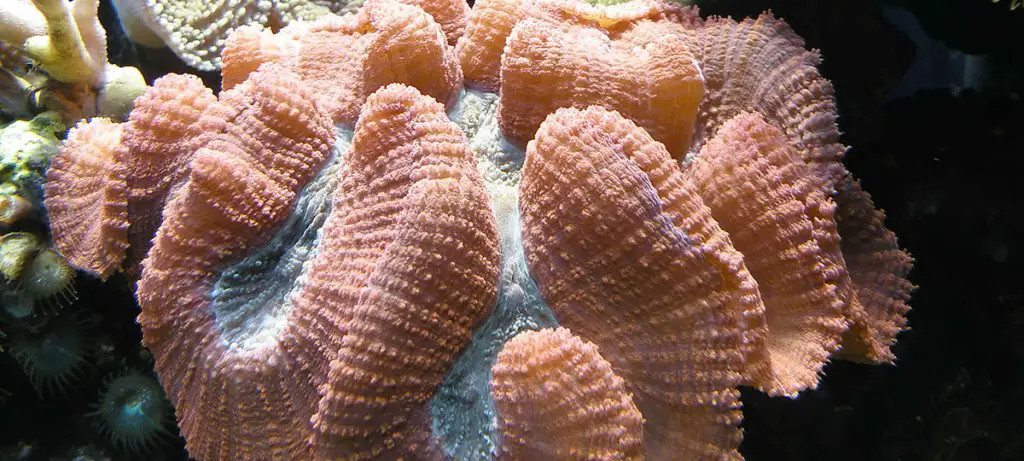
Since corals aren’t exactly free-floating or swimming, they have limited eating capabilities. The micro plankton that live on them, of course, help by producing that sugar they need.
But otherwise, they have limitations based on the life around them.
Most reef building corals – i.e. hard corals – receive the significant part of their nutrition from the micro plankton that live within their polyps.
But many corals also catch tiny floating animals called zooplankton and nosh on those at night when they come out of their skeletons to feed.
They stretch out their long, stinging tentacles to capture the critters floating by and pull them into their mouths.
But Don’t Corals Need Calcium to Grow?
Corals do, absolutely, need calcium to grow. However, they extract the calcium and carbonate from seawater rather than their food, typically, to build their skeletons.
This is why calcium supplements in your marine salt is so critical for the health of your corals.
So, How Do feed coral food?
The type of coral food you bring home to your coral will have some effect on the process of feeding them.
You can either feed coral directly through specific instructions given with the food you purchase or you can indirectly feed your coral through various means, including through zooplankton, shrimp, and other fish food that corals can eat.
Corals are nocturnal, so, if possible, feeding them at night is a good idea, though it is not always necessary.
The two basic types of coral feeding include broadcast feeding and targeted feeding.
Broadcast feeding involves “generic” spreading of coral food within the fish tank.
Targeted feeding is the method in which you give the food directly to your aggressive corals via turkey baster, eye dropper, or similar apparatus.
Author note: The type of coral you keep determines which feeding style is most beneficial. Don’t just make assumptions because one sounds easier than the other.
How Often do they need coral food?
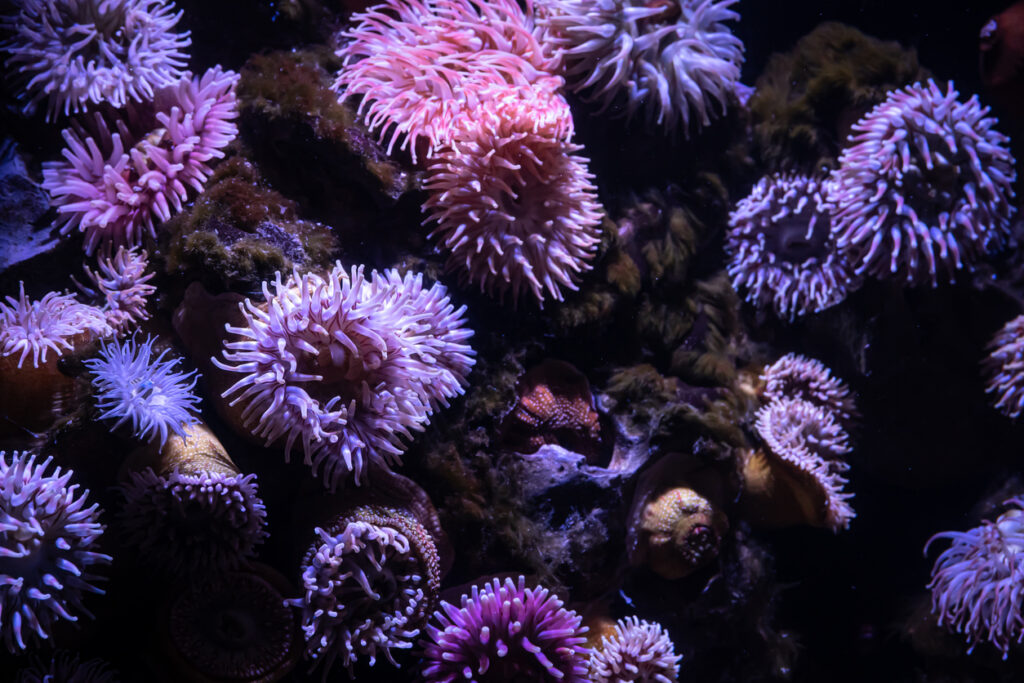
The final question you may have before we dive into the best coral food options is how often you should feed your corals.
There is no absolute rule on the frequency that corals need to eat. Some fishkeepers swear by twice weekly feedings, while others feed their corals every day. Some feed once weekly, others feed every few days.
It’s really based on the types of corals you keep, how much you want them to grow, the other fish and plants you keep, and, of course, the type of food you serve to your corals.
Meaty, high-protein coral foods will increase growth significantly, it should be noted, so that means more waste. More waste means you may need to do a partial water change more often.
Top tip: Most experts recommend 20% the day after feeding each time.
Reviews of the Best coral food
We wanted to ensure that we’re recommending only the best of the best coral food options, so we used several parameters to determine which ones to recommend.
- Never anything artificial
- High in protein for increased growth
- Comes from well-trusted brands
- Safe for other fish and animals to be around
- Easy to use
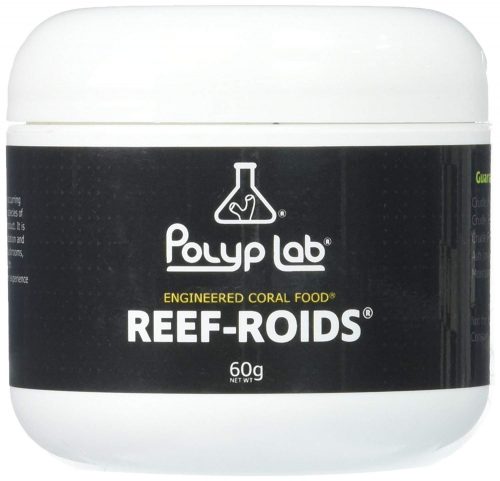
For the absolute best, easiest to use coral food on the market, look to Polyp Lab Reef Roids.
This stuff is designed for intense coral growth, made from zooplankton and other natural marine plankton for the healthiest, happiest coral around.
You’ll visibly notice the food kicking in soon, thanks to the boost in size of your coral after just a few weeks.
Here’s what you get:
- Made from: Zooplankton, marine plankton
- Type: Best for target feeding, can be used for broadcast feeding
What We LoveD
Polyplab Reef Roids is designed specifically for your aggressive corals that need to be target-fed, which we love. It’s great for easy, direct feeding, which means you just use as directed and go.
We also love that this coral food is made of all natural ingredients – zooplankton and marine plankton – that your coral would naturally eat in the ocean.
We love how quickly and happily your coral will respond to this intensely protein-laden food, with polyp extension and fast growth.
We also love that this coral food protects the water parameters of your aquarium. You won’t feed your coral only to discover the pH is out of whack the next day.
Polyplab is also designed for regular, normal feedings, so you can safely use it as often as you need. And, assuming you use as directed, a single package will last for about three months.
What We Didn’t love
The only real issue we’ve seen with any consistency is mention in some reviews by folks that the lid od the container gets loose after a few uses. This obviously isn’t great, but it’s not the worst thing ever, by a long shot.
Our Verdict on Polyplab Reef Roids
For the best, fastest growing coral food, go with this one. It’s powerfully packed with all natural protein that will get your coral growing quickly, with either targeted or broadcast feeding for your aquarium. The corals are going to love it.
>> Tap Here to Read More Reviews and See Today’s Price on Amazon.com <<
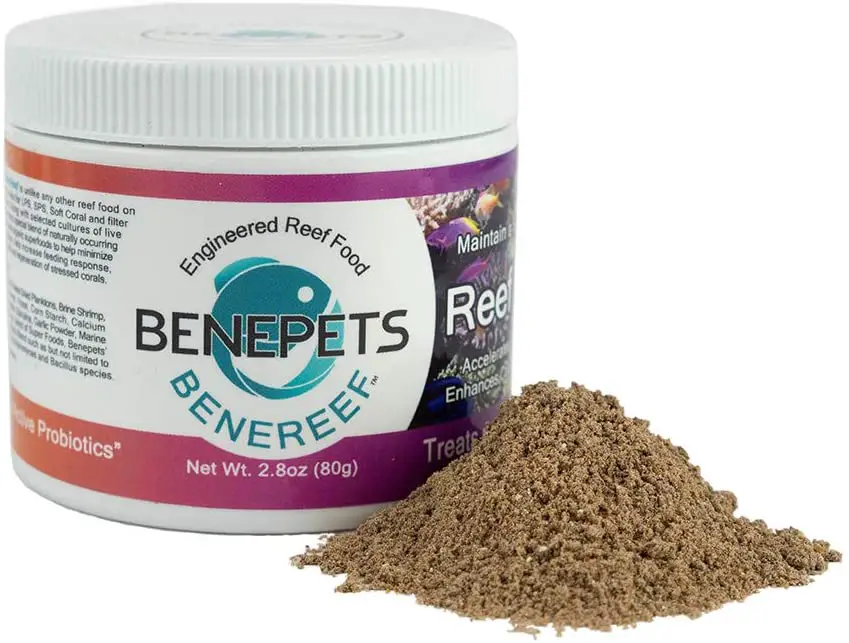
For an all-around, easy to use, easy to understand coral food, Benepets Benereef Coral Food is your best bet.
This simple to use, broadcast or targeted feeder is great for beginners and old pros alike, though we specifically recommend it to anyone who’s new to feeding corals.
It will feed your whole marine tank from corals to those little fishies we love. So, whether you’ve got softies or hard corals, you’re in luck with this one.
- Made from: listed as “select protein sources”
- Type: Best for broadcast feeding as general saltwater tank food (crustaceans, corals, fish, et cetera)
What We Loved
We love the reviews we see on this one. Many folks report that before switching to Benepets Benereef, their reefs had shrunk or were just “doing okay.”
After making the switch, though, polyps boom, corals thrive, and fish do better, too.
We love that the product is easy to use and great for beginners and pros alike.
And a huge, HUGE thing is that it doesn’t raise phosphate levels in the aquarium!
We also love that the food isn’t crazy over-priced when it packs so many amazing benefits for your corals.
What We Didn’t love
Acans, wrasses, and blastos, specifically, don’t seem to like this food.
Our Verdict on Benepets Benefood Coral Food
Overall, Benepets Benefood is the easiest broadcast or targeted feeder to use for your corals, meaning it’s a great choice for beginners to reef tanks.
The food is loved by corals – and they thrive when its their food source.
The only potential issue seems to be that some species of fish don’t really like it.
>> Tap Here to Read More Reviews and See Today’s Price on Amazon.com <<

For the best lower level aquarium care in your tank, think Kent Marine Coral Accel.
This stuff takes care of your SPS and LPS corals, your sponges, your clams, scallops, and pretty every other bottom dweller in your marine tank.
And it’s super easy to use for feedings all around.
- Made from: Hydrolyzed Marine Protein, Marine Lipids, Potassium Iodide
- Type: Best for broadcast feeding for your marine bottom dwellers and specifically for SPS corals
What We LoveD
First off, we love the natural makeup of this coral food.
It’s made up of a balance ratio between the right lipids, carbohydrates, and protein sourced from the naturally occuring phytoplankton that your corals would naturally eat in the wild.
We also love that it’s great for all those bottom dwellers in your aquarium, not just the corals.
Sponges, clams, scallops, and other critters down there love the protein and healthy fatty acids made available to them through this broadcast food.
And that makes it so much easier for you to care for all of them.
We love that it’s specifically designed to be the best SPS coral food, not just for “general” coral use.
This means it will keep those small corals healthier and bring out their coloration even more.
It’s also reasonably priced, which is always a great thing.
What We didn’t Love
There is one potential danger in this for anyone who’s new to feeding their corals.
It’s a fast food delivery type, so you could potentially have to deal with overfeeding. Be sure to use this phyto carefully to care for your corals and bottom dwellers.
Our Verdict on Kent Marine Phytoplex
All in all, this is a super great option as your SPS food choice, as well as for your bottom dwellers like clams and sponges. Be sure to feed it carefully to avoid overfeeding.
If you do that, you’ll be golden with this nutrient-rich phytoplankton food.
>> Tap Here to Read More Reviews and See Today’s Price on Amazon.com <<

Two Little Fishies Marine Snow is a unique approach to coral food that will only help the marine tank.
It’s not a fully, complete coral food for all the time, but it’s a great mix-in item to round out the diet of your corals with the unique biogenic material that it includes when practically no one else does.
It works in any feeding manner, as well, which makes it uber versatile for anyone with corals.
- Made of: phytoplankton, zooplankton
- Type: Target feeding, broadcast feeding, LPS coral food, SPS coral food, general marine animal food
What We Loved
Of course, the very first thing we love about this supplemental coral food is that it adds in some of that much needed biogenic material that your corals would get in the wild ocean.
These little material bits are a part of a natural marine animal’s native food, so it’s a great, healthy way of giving your corals a boost for color and growth rates.
It also includes all the necessary ingredients for healthy coral keeping as well, with phytoplankton and zooplankton. This lays a base level of nutrition for your corals, even if it’s not all you’d want them to have ever.
Finally, we love the fact that this can genuinely be used in any kind of feeding method for your corals. And the corals respond really well to it, no matter the method.
What We Didn’t Love
There’s only one potential issue with this, though it’s not a big deal. It can get kind of thick if it’s kept in the fridge – which it needs to be to prevent it from going bad.
So, it can be a little frustrating. But if you take it out ahead of time, you’ll be fine.
Our Verdict on Two Little Fishies Marine Snow
This is a great supplemental food for your corals – whether LPS or SPS. It works with any feeding method, gives a base level nutrition along with the boost via the biogenic material, and easily stores in the fridge.
Just warm it up about 15 minutes before you plan to feed to help it “soften” to an easier feeding form at room temperature.
>> Tap Here to Read More Reviews and See Today’s Price on Amazon.com <<
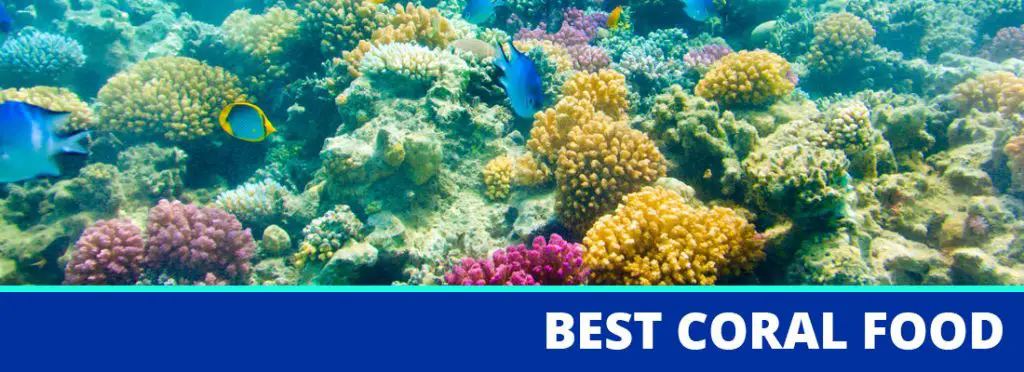



i disagree reef roids is now the most basic coral food on the market.
(Contains all-natural ingredients not found in most coral foods) this is not true it contains random mix Unkown and unlabeled unprocessed zooplankton; they are taking zooplankton or “marine planktons” with an unknow harvested date (who knows how old the product actually is) and putting it in a packing and selling it
as engineered and the most advanced. (Only engineering was how to make money from the basic while calling it caviar).
(Protects water from degradation) it is unprocessed dirty zooplankton. Anything not eaten will rote and phosphate and nitrate spikes simply google it. Im not sure how it protects the system when its adding to the problem.